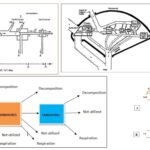Genetics 13 Views 1 Answers
Sourav PanLv 9September 10, 2024
what does a chi-square test tell you?
what does a chi-square test tell you?
Please login to save the post
Please login to submit an answer.
Sourav PanLv 9May 15, 2025
A Chi-Square test provides insights into categorical data by evaluating the relationships and differences between observed and expected frequencies. Specifically, it tells you the following:
1. Association Between Variables
- Independence: The Chi-Square test for independence assesses whether two categorical variables are associated or independent of each other. If the test result is significant, it suggests a relationship between the variables.
- Example: If analyzing a survey, the test might reveal whether gender is associated with preference for a particular product.
2. Goodness of Fit
- Model Fit: The Chi-Square test for goodness of fit determines how well an observed frequency distribution matches an expected distribution based on a theoretical model or hypothesis. It tells you whether the observed data fit the expected pattern or distribution.
- Example: Testing whether the observed distribution of colors in a bag of M&Ms aligns with the expected distribution claimed by the manufacturer.
3. Homogeneity Across Groups
- Comparative Analysis: The Chi-Square test for homogeneity evaluates whether the distribution of a categorical variable is similar across different populations or groups. It indicates whether different groups have the same distribution of the categorical variable.
- Example: Comparing the distribution of product preferences across different geographic regions to determine if preferences are consistent across regions.
4. Significance of Differences
- Statistical Significance: The test provides a p-value that indicates whether the differences between observed and expected frequencies are statistically significant. A low p-value (typically less than 0.05) suggests that the differences are unlikely due to chance and are statistically significant.
- Example: In a study of disease occurrence in different age groups, a significant p-value would suggest that the distribution of the disease is not uniform across age groups.
Summary of What a Chi-Square Test Tells You
- Relationship: Whether there is a significant association or independence between two categorical variables.
- Fit: How well the observed data conform to a theoretical or expected distribution.
- Consistency: Whether the distribution of a categorical variable is similar across different groups or populations.
- Statistical Significance: Whether observed differences are statistically significant and not due to random chance.
0
0 likes
- Share on Facebook
- Share on Twitter
- Share on LinkedIn
0 found this helpful out of 0 votes
Helpful: 0%
Helpful: 0%
Was this page helpful?




